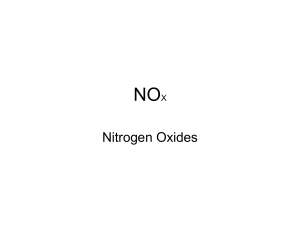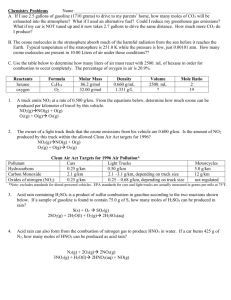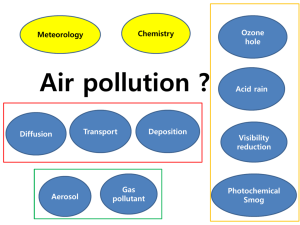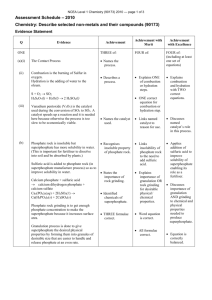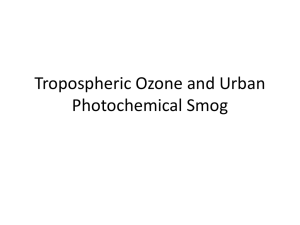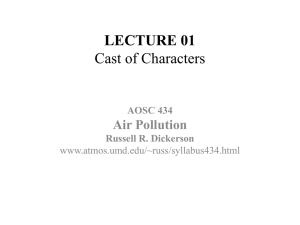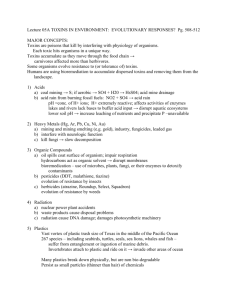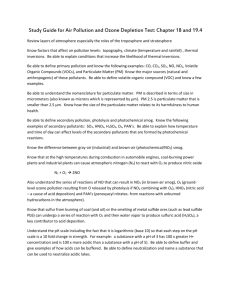Photochemical Smog
advertisement
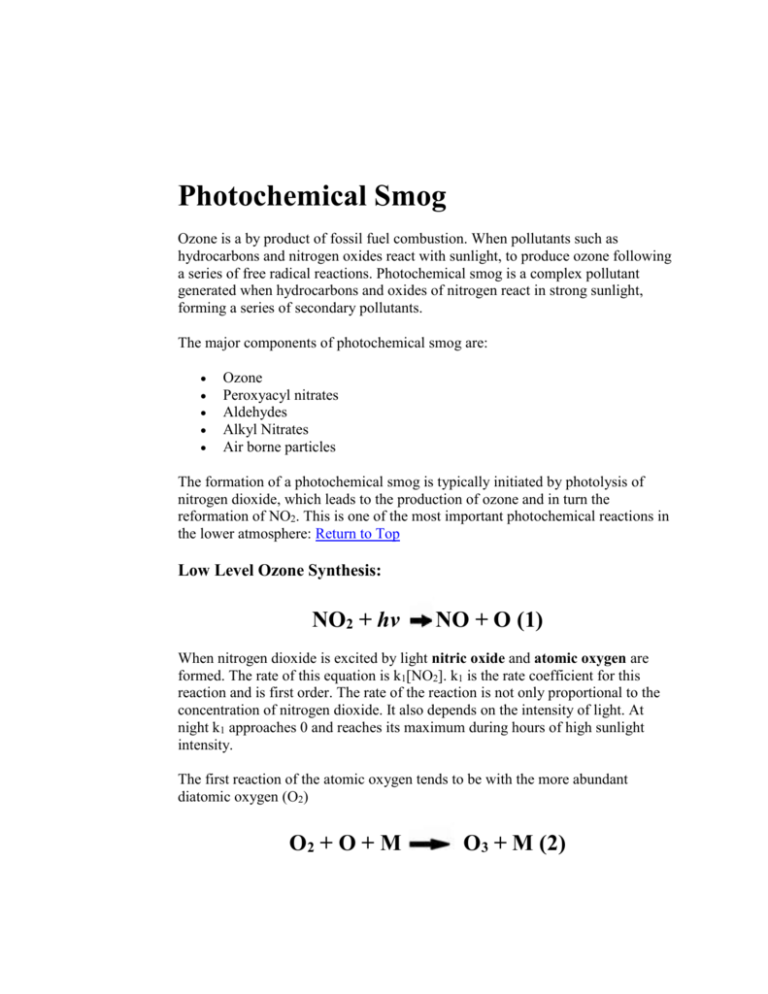
Photochemical Smog Ozone is a by product of fossil fuel combustion. When pollutants such as hydrocarbons and nitrogen oxides react with sunlight, to produce ozone following a series of free radical reactions. Photochemical smog is a complex pollutant generated when hydrocarbons and oxides of nitrogen react in strong sunlight, forming a series of secondary pollutants. The major components of photochemical smog are: Ozone Peroxyacyl nitrates Aldehydes Alkyl Nitrates Air borne particles The formation of a photochemical smog is typically initiated by photolysis of nitrogen dioxide, which leads to the production of ozone and in turn the reformation of NO2. This is one of the most important photochemical reactions in the lower atmosphere: Return to Top Low Level Ozone Synthesis: NO2 + hv NO + O (1) When nitrogen dioxide is excited by light nitric oxide and atomic oxygen are formed. The rate of this equation is k1[NO2]. k1 is the rate coefficient for this reaction and is first order. The rate of the reaction is not only proportional to the concentration of nitrogen dioxide. It also depends on the intensity of light. At night k1 approaches 0 and reaches its maximum during hours of high sunlight intensity. The first reaction of the atomic oxygen tends to be with the more abundant diatomic oxygen (O2) O2 + O + M O3 + M (2) M is an unreactive 3rd molecule which is needed to absorb excess energy from the reaction. The rate coefficient of this reaction is k2. There is a third and final reaction which completes this this reaction: O3 + NO NO2 + O2 (3) This reaction has the rate coefficient k3. Each of the 3 reactions is very fast, and a photostationary state of equilibrium is established, this governs the ratio of NO2/NO in air, which in turn can be shown to be proportional to the concentration of ozone. [NO2]/[NO] = k3[O3]/k1 (4) So as k1approaches 0 (night time conditions. The presence of excess ozone increases and the lowest [NO2]/[NO] ratios are during hours of extreme day light. The reactions (1) and (2) produce ozone and mono-atomic oxygen, which go on to react with hydrocarbons released from fossil fuels. Alkenes are particularly susceptible to attack from these oxygen allotropes. A typical reaction is shown below: CH3CH=CHCH3+O3 CH3CHO2+CH3CHO(5) The reaction chain is then propagated: C2H5+O2 C2H5O2+NO C2H5O+O2 HO2+NO C2H5O2(6) C2H5O+NO2(7) CH3CHO+HO2(8) NO2CHO2+OH(9) Reactions (7) and (9)convert NO to NO2 without the use of ozone, keeping NO concentrations reasonably low. Reaction 3 is relatively unimportant meaning that high levels of ozone are able to build up. Photochemical smog's are a particular problem in built up cities where there are high numbers of vehicles and industries relying on combustion of fossil fuels. Eventually winds disperse the smog.
